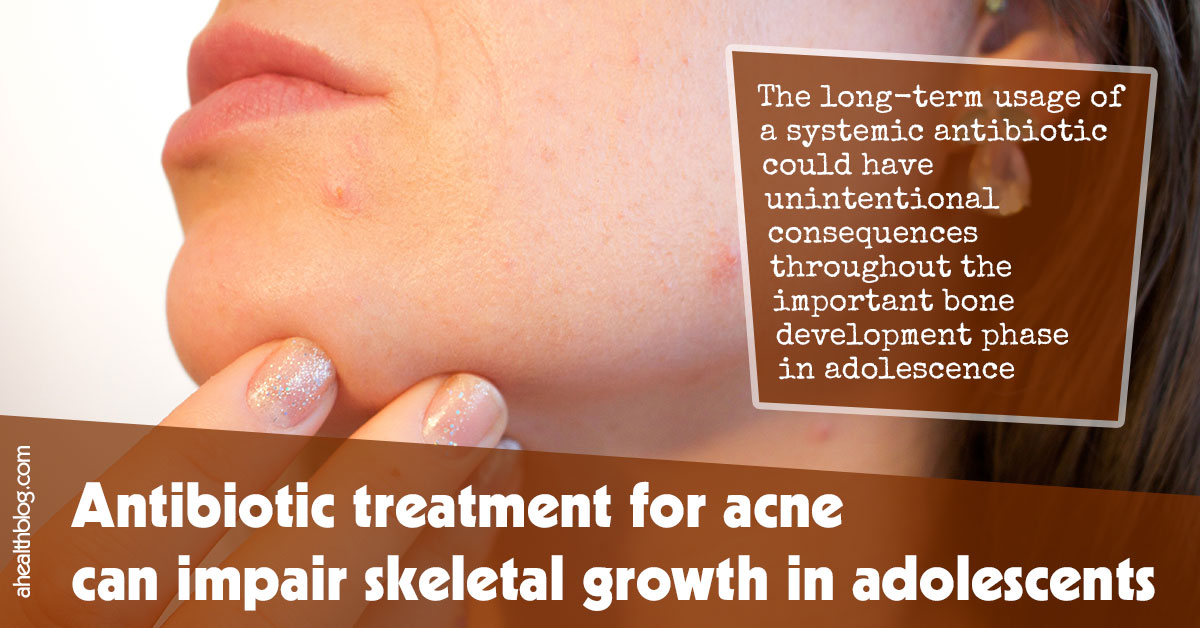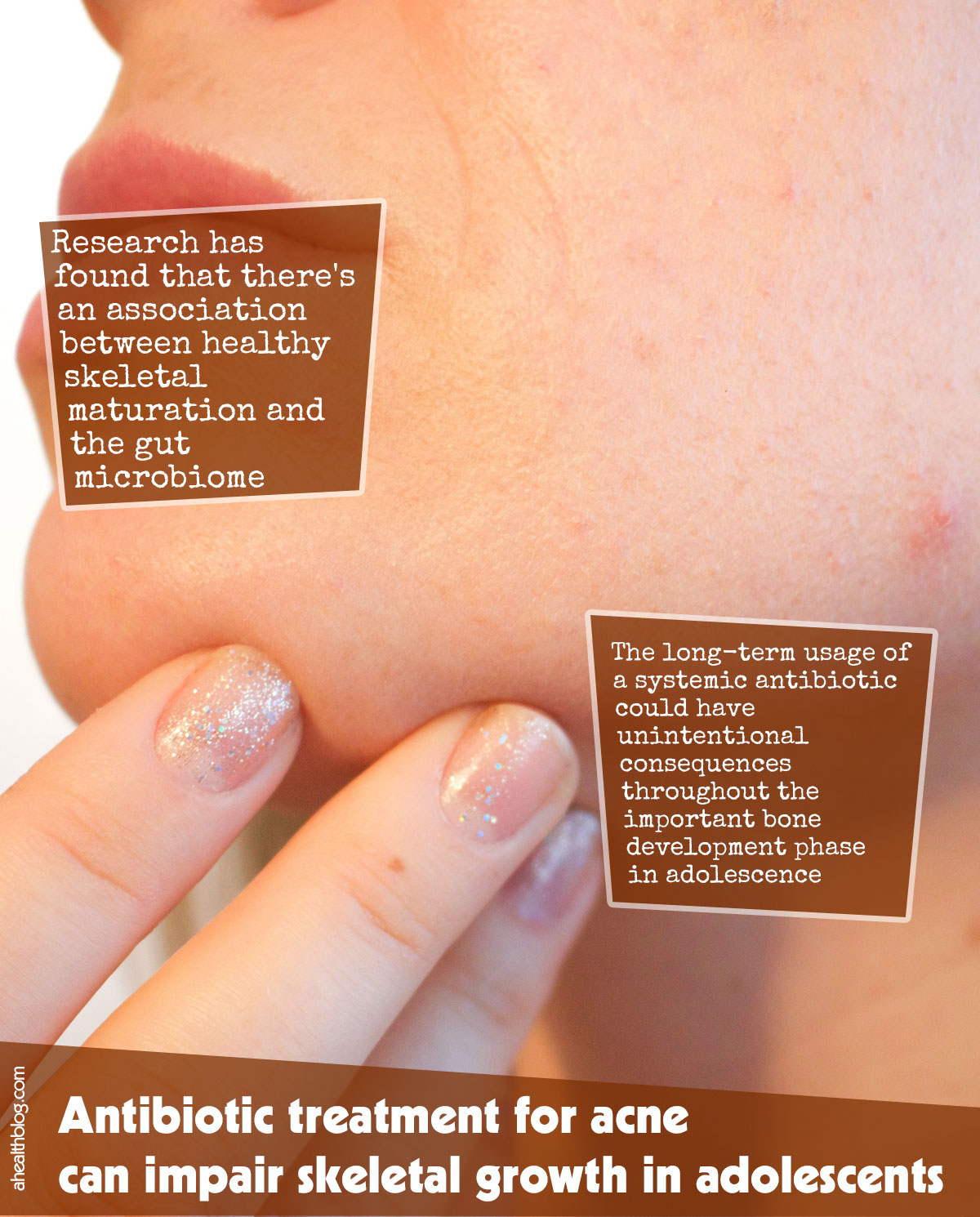One of the most common, and often stressful, adolescent experiences is acne, a condition of the skin that is caused by the clogging of follicles of hair with dead skin cells and oil.
Systemic antibiotics such as minocycline are often prescribed to help in relieving symptoms and clearing the skin up in those adolescents whose acne is topical treatment-resistant.
These antibiotics function by preventing the development and spread of bacteria and in acne, they kill the pore-infecting bacteria and reduce some of the natural oily substances that result in acne.
Systemic antibiotic acne treatment however sometimes requires long-term use, often as long as 2 years. Research has found that there’s an association between healthy skeletal maturation and the gut microbiome makeup. The long-term usage of a systemic antibiotic like minocycline could have unintentional consequences throughout the important bone development phase in adolescence.
There are sustained gut microbiome changes after long-term systemic minocycline treatment that result in reduced bone maturation. The maturing skeleton is not only changed with minocycline treatment, but the skeleton and the microbiome are incapable of completely recovering following antibiotic treatment.
Up to 40% of peak bone mass is accrued in puberty, which correlates with microbiome maturation. If the system is disrupted during this important period of growth and peak bone mass is reduced, microbiome disruption can have a long-lasting effect on the risk of fracture and skeletal health.
Changing the gut microbiome with minocycline also disrupted the small intestine and liver communication which centers around small molecules known as bile acids.
These bile acids normally move from the liver to the small intestine for assisting in digestion and helping in breaking down fats. The makeup of the bile acids is changed by altering the gut microbiome, influencing host physiology, which includes skeletal maturation.
The small intestine’s pool of bile acids is continually modified by the gut microbiome. They then behave as messenger molecules and talk to the intestine’s host cells and other anatomical sites. For instance, bone formation can be stimulated by bile acids when they communicate with osteoblasts.
The changed gut microbiome caused by minocycline treatment produced a different pool of bile acids which didn’t activate osteoblasts and resulted in a significant mineralization and bone formation reduction of over 30%.1✅ JOURNAL REFERENCE DOI: 10.1172/jci.insight.160578




